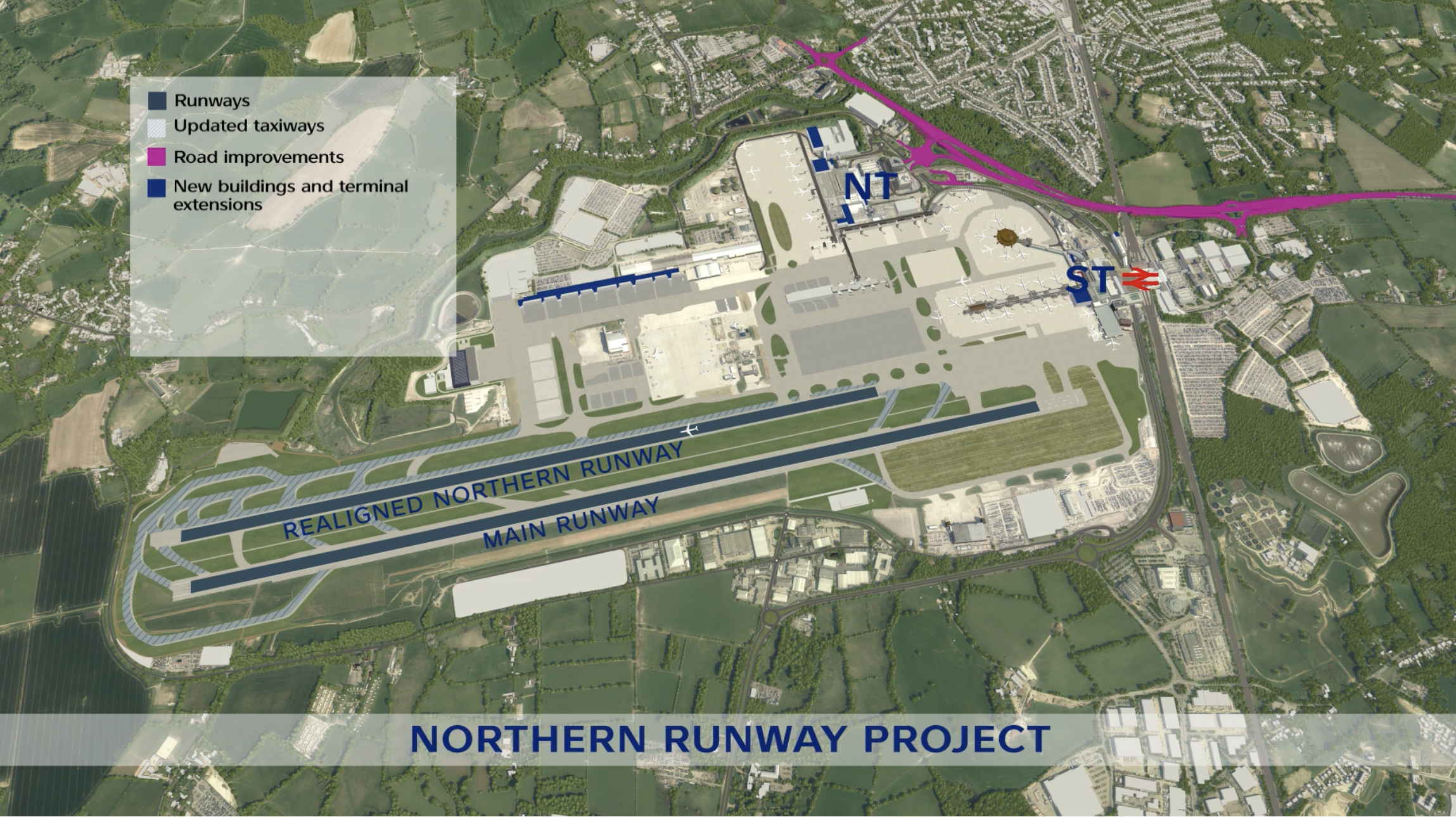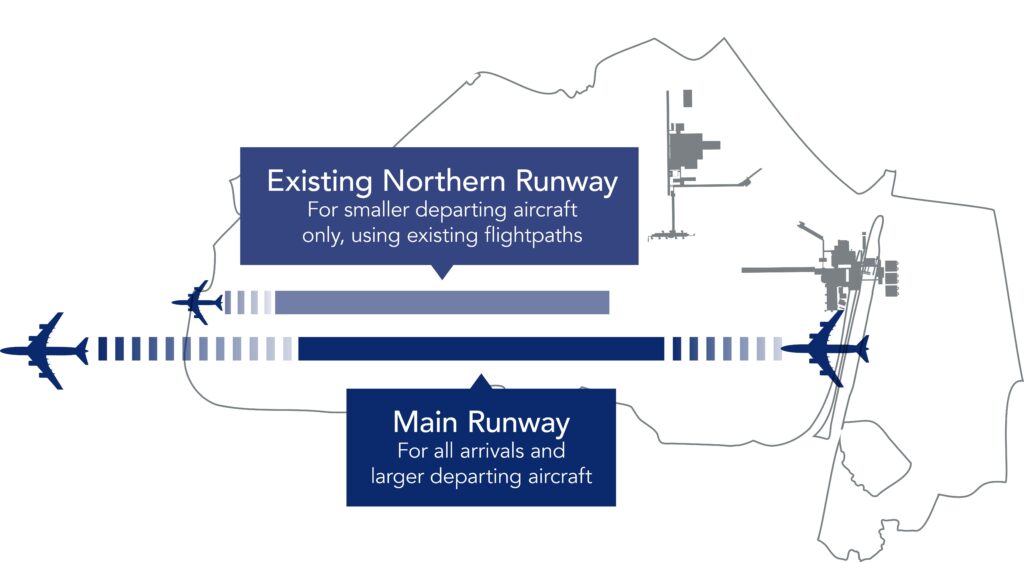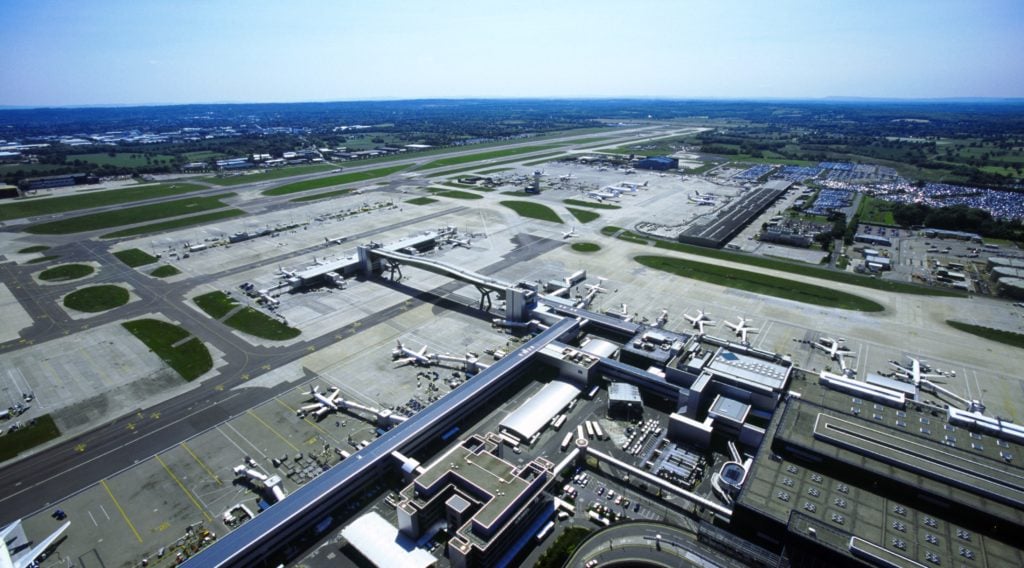Game-Changing Expansion: London Gatwick Aims to Rival Heathrow with Second Runway
London's secondary airport hopes to rival Heathrow by bringing its second runway into permanent use and increase passenger numbers to 75 million per year
by Fergus Cole
July 10, 2023

Photo: Courtesy of London Gatwick Airport
London Gatwick Airport (LGW) has formally submitted its plans for a £2.2 billion ($2.8 billion) expansion project to see its second runway come into regular use and allow the airport to double its passenger capacity to around 75 million travelers annually.
On Thursday, July 6, the airport submitted its official proposals to the Planning Inspectorate (PINS), outlining the details of the expansion project and the benefits it will bring to the area. According to London Gatwick, the proposed expansion would create around 14,000 new jobs and contribute around £1 billion ($1.3 billion) annually to the local economy.
London’s secondary airport already has a second runway—the Northern Runway—although it is currently only used for taxiing and when the main runway is out of use. But Gatwick revived its long-standing plans to turn it into a permanent commercial runway in 2021, as demand for international travel surged again following the COVID-19 pandemic.
Under the multi-billion dollar expansion plans, Gatwick’s total capacity would increase to around 75 million passengers annually by the late 2030s. This would make LGW rival London’s current primary hub—London Heathrow (LHR)—as the U.K. capital’s main airport. London Gatwick served 32.8 million passengers in 2022, compared to the 61.6 million served by Heathrow last year.
“The Northern Runway plan will help secure the long-term future of the airport and economic prosperity for thousands of families, businesses, and future generations across the region,” said Stewart Wingate, CEO of Gatwick Airport.
“If approved, our plan will also improve airport resilience, meet future passenger demand, and increase competition in the London airport market, by providing vital new international connections to support ‘Global Britain’.”

Photo: Courtesy of London Gatwick Airport
Wingate added, “The consultation and engagement activity over the past two years has been hugely valuable in shaping our plans to ensure they best meet the needs and requirements of local people, as well as our airlines, passengers and other stakeholders. We are confident that our plans are both economically and environmentally robust.”
However, the airport’s plans have been met with opposition from campaigners, who claim that any expansion would severely impact noise and air pollution levels in the surrounding area while also significantly increasing carbon emissions.
“We consider that Gatwick is busy enough,” said Peter Barclay from the Gatwick Area Conservation Campaign. “Carbon emissions has to be our greatest concern. We have to think about the future of our children and our grandchildren and future generations.”
Even the Mayor of London, Sadiq Khan, who had previously given his public support for Gatwick’s expansion plans, seems to have changed his position to one of objection as it doesn’t fit the city’s sustainability goals.

Photo: Courtesy of London Gatwick Airport
A spokesperson for the Mayor told The Guardian that he is “committed to making London net zero by 2030 and reducing air pollution.”
“The aviation sector needs to play a part in this and not undermine our efforts to achieve this goal. The Mayor fails to see how any airport expansion can be justified if it is incompatible with tackling the climate crisis and achieving our net zero targets.”
A decision on whether the expansion plans can go ahead is expected to be made by the end of 2024.



